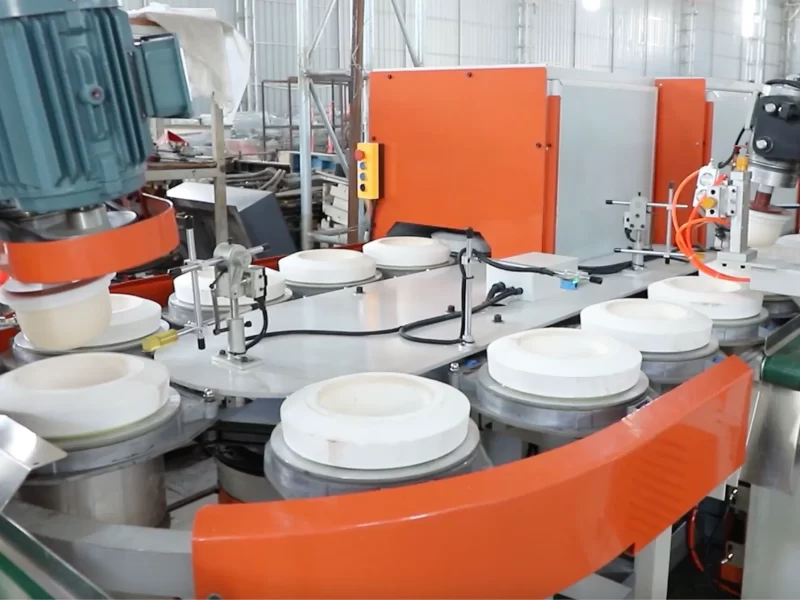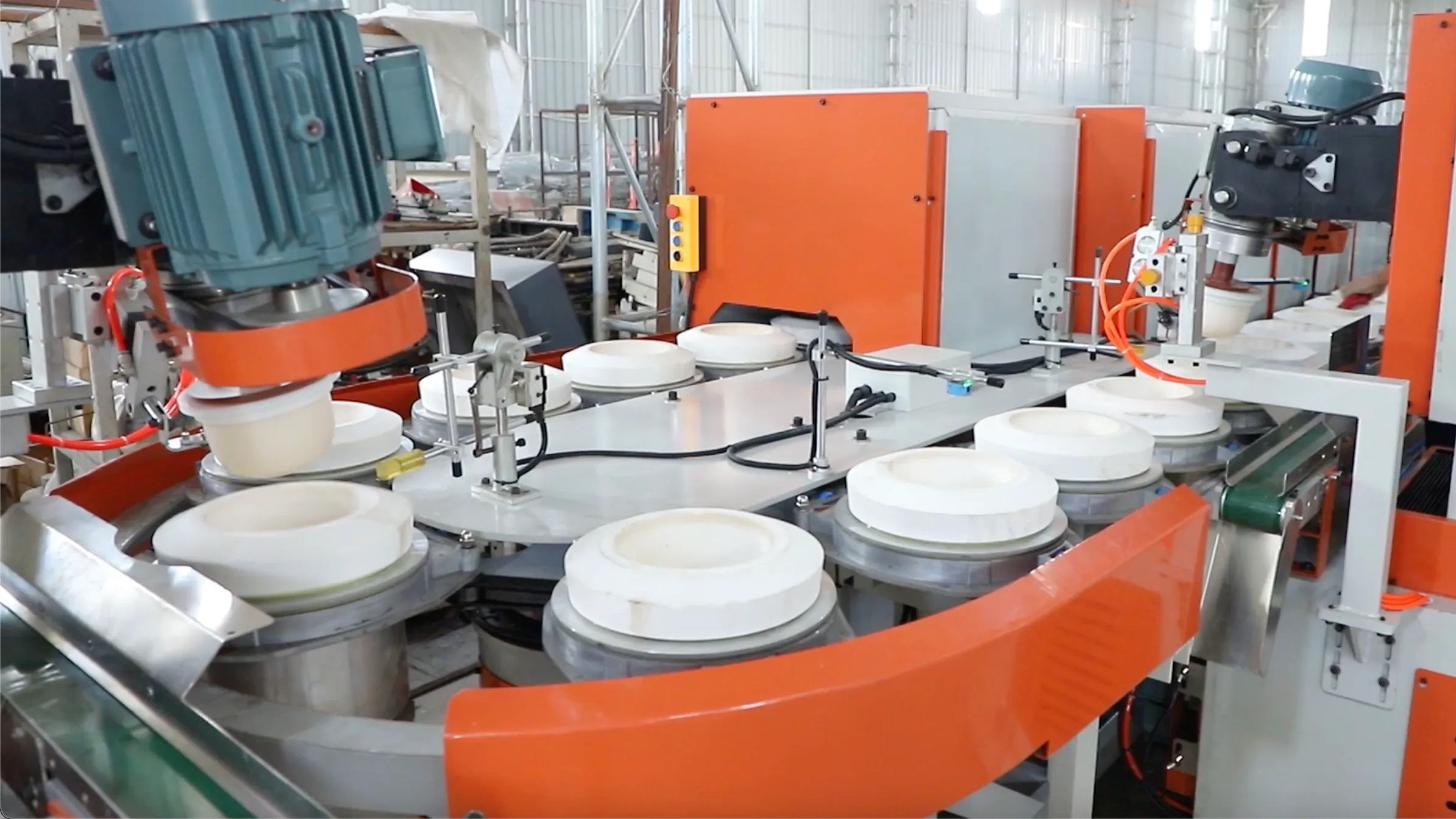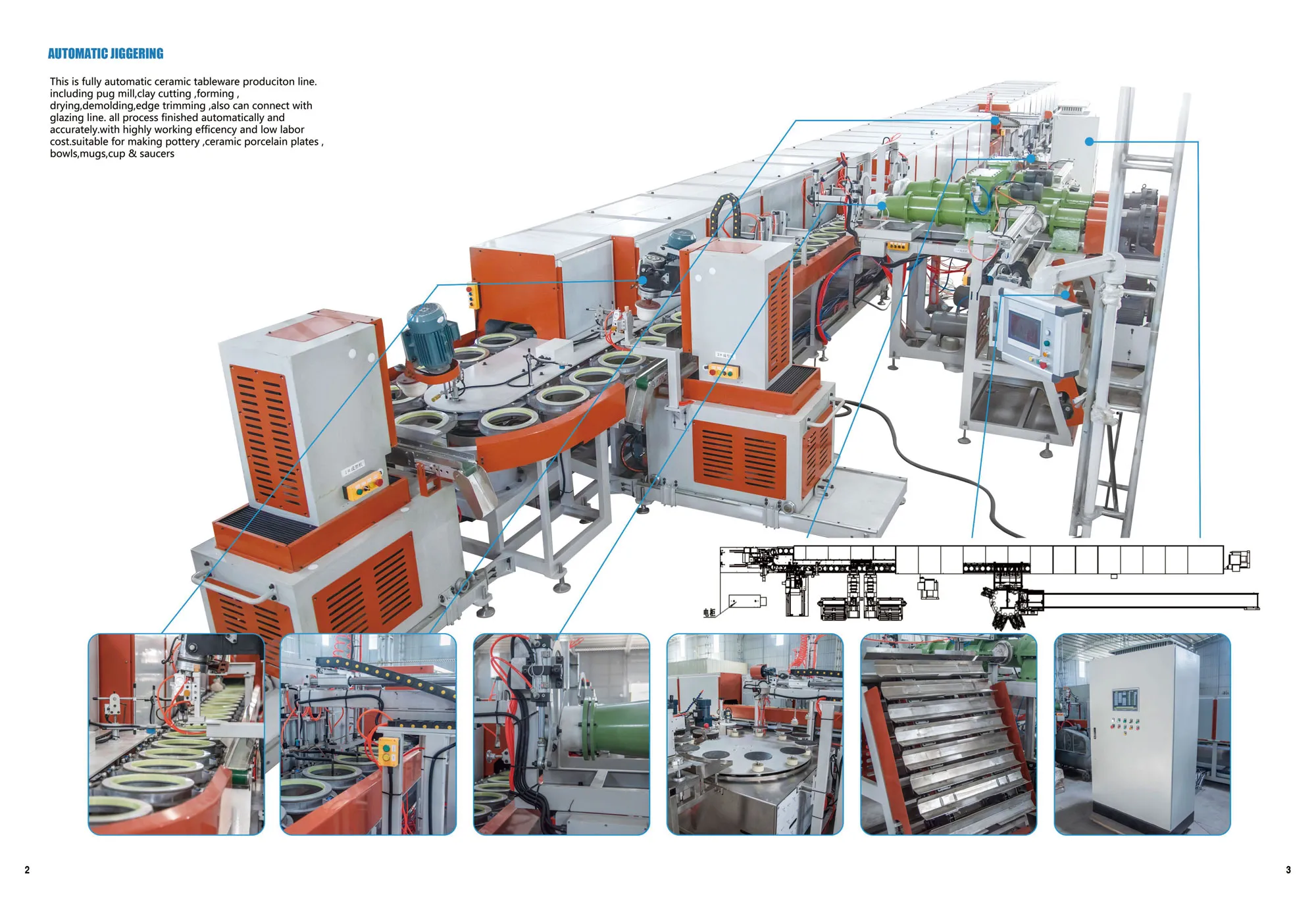
Bei der Herstellung von Keramikschalen und -tellern, Umformautomaten haben mit ihren Vorteilen wie hohe Effizienz, hohe Konsistenz und niedrige Kosten nach und nach die traditionellen manuellen Produktionsmethoden ersetzt und sind für immer mehr Keramikfabriken zur bevorzugten Ausrüstung geworden. In diesem Artikel wird die Rolle automatischer Formgebungsmaschinen in der Keramikherstellung von ihrem Funktionsprinzip bis zur praktischen Anwendung untersucht und den Herstellern ein klarer Referenzplan an die Hand gegeben.
Die Keramikherstellung geht in Richtung Automatisierung
Die Keramikindustrie durchläuft einen Wandel von "erfahrungsgesteuert" zu "datengesteuert" und von der "manuellen Werkstatt" zur "intelligenten Fabrik". Die Nachfrage auf dem Weltmarkt nach großformatigen, standardisierten und maßgeschneiderten Keramikschalen und -tellern steigt weiter an. Das traditionelle manuelle Pressen, manuelle Glasieren und manuelle Brennen kann den Anforderungen der modernen Industriekette nicht mehr gerecht werden. Die Einführung automatisierter Anlagen ist ein wichtiger Bestandteil der digitalen Modernisierung von Keramikfabriken geworden.
Das grundlegende Funktionsprinzip des Formautomaten
Die Formautomaten ist eine Vorrichtung, die das Pressen und Formen von keramischem Schlamm mechanisiert. Es verwendet in der Regel ein hydraulisches oder servoangetriebenes System und erreicht eine präzise Steuerung durch eine programmierbare Logiksteuerung (SPS).
Der Hauptarbeitsablauf umfasst:
Fütterungssystem: Automatischer Transport von keramischem Ton zur Stumpfposition
Pressen und Gießen: Die obere und untere Matrize werden geschlossen, und das Pressen wird unter dem eingestellten Druck und der eingestellten Zeit abgeschlossen
Entformungssystem: Steuerung der Entformung und Entnahme der geformten Schalen und Teller aus der Form
Fördersystem: Schicken Sie die zuerst geformten Schalen und Teller zur Trocknung oder zur nächsten Station
Der gesamte Prozess wird durch das Kontrollsystem gesteuert, um einen effizienten, stabilen und kontinuierlichen Betrieb zu gewährleisten.
Vorteile von Formautomaten in der Keramikherstellung
Verbesserung der Produktionseffizienz
Das automatisierte Pressen ermöglicht einen schnellen und einfachen Wechsel der Formen. Ein Gerät kann einen kontinuierlichen Betrieb unterstützen, und die Tagesproduktion kann Zehntausende von Teilen erreichen, was die traditionelle manuelle Produktion weit übertrifft.
Gewährleistung der Produktkonsistenz
Die Form verfügt über eine hohe Präzision, einen präzisen Formdruck und eine genaue Zeitsteuerung, wodurch menschliche Fehler effektiv vermieden werden und die Standardisierung und die Qualität des Aussehens von Schalen- und Plattenprodukten verbessert werden.

Arbeitskosten sparen
Es werden nur 1-2 Bediener benötigt, um die gesamte Maschine zu steuern, was die Anzahl der Arbeiter erheblich reduziert und die Schwierigkeit der Schulung und des Managements verringert.
Unterstützung von Produktwechseln mit mehreren Spezifikationen
Durch Ändern der Form können Sie sich an verschiedene Formen anpassen, wie z. B. tiefe Schalen, flache Teller, Salatschüsseln usw., um den Anforderungen verschiedener Marktaufträge gerecht zu werden.
Einfache Bedienung und hohe Sicherheit
Ausgestattet mit einer Mensch-Maschine-Schnittstelle (HMI) mit Touchscreen, verfügt er über Sicherheitsfunktionen wie automatischen Alarm, Grenzwertschutz und Fehlbedienungssperre, um Betriebsrisiken zu verringern.
Automatische Umformmaschinen - Einsatzszenarien und praktische Anwendungen
Automatische Umformmaschinen sind besonders für die folgenden Szenarien der Keramikproduktion geeignet:
Fabriken zur Herstellung mittlerer und großer Keramikschalen und -teller: geeignet für die standardisierte Chargenproduktion und die Verbesserung der Effizienz von Einzelprodukten
Maßgeschneiderte Keramikfabriken: Schnelles Wechseln der Formen, um den Bedarf an kleinen Chargen verschiedener Sorten zu decken

Exportorientierte Unternehmen: Antwort auf die Nachfrage des Überseemarktes nach sehr konsistenten und kostengünstigen Produkten
Fabriken in Gebieten mit Arbeitskräftemangel: Automatische Formgebungsanlagen verringern das Problem der schwierigen Rekrutierung von Arbeitskräften und verbessern den Automatisierungsgrad
Nachdem ein Kunde aus dem Nahen Osten die vollautomatische Schalen- und Plattenformungsanlage von Yutai eingeführt hatte, erhöhte sich die tägliche Produktionskapazität von 20.000 auf 50.000 Stück, die Produktqualifikationsrate stieg von 92% auf 98,6%, und die Investitionskosten für die Anlage wurden innerhalb eines Jahres wieder hereingeholt.
Wie wählt man die richtige automatische Umformanlage aus?
Bei der Auswahl einer automatischen Formmaschine sollten Sie eine umfassende Betrachtung auf der Grundlage der Betriebsgröße, der Produktart und der angestrebten Produktionskapazität anstellen. Die folgenden Vorschläge sind als Referenz gedacht:
| Auswahl Dimension | Empfohlene Erwägung |
| Verfahren zum Formen | Das Embryo-Pressverfahren eignet sich für Schalen und Teller, das Fugenverfahren für spezielle oder komplexe Formen. |
| Art der Form | Ob es schnelle Formwechsel unterstützt und mit einer Vielzahl von Schüssel- und Plattenspezifikationen kompatibel ist |
| Kontrollsystem | Intelligente SPS-Steuerung und Unterstützung der Mensch-Maschine-Schnittstelle (HMI) |
| Unterstützende Fähigkeit | ob sie mit Trocknungs-, Glasur- und Brennanlagen zu einer kompletten Produktionslinie verbunden werden kann |
| Kundendienst und Fehlerbehebung | Ob Installations- und Fehlerbehebungsdienste, technischer Fernsupport und Formularanpassung angeboten werden |
Wenn Sie sich bei der Auswahl der Geräte nicht sicher sind, wenden Sie sich bitte an Kontaktieren Sie uns für eine persönliche professionelle Beratung.
Schlussfolgerung
Die Formautomaten befreit den Schritt des Formens vom "Menschen" und macht die Produktion von Keramikschalen und -platten schneller, genauer und standardisierter. Mit der beschleunigten Modernisierung der Keramikindustrie ist die automatische Formgebung der Schlüssel zur Erhaltung der Wettbewerbsfähigkeit der Unternehmen geworden. Möchten Sie wissen, welche automatische Formmaschine für Ihr Produkt geeignet ist? Ansprechpartner Yutai zu erhalten professionelle keramische Formgebungslösungen.
